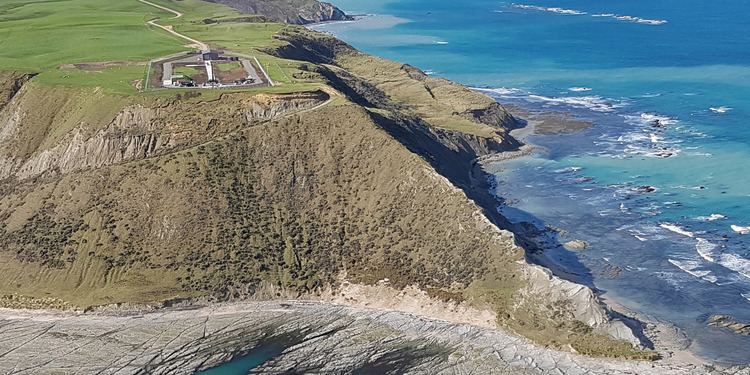Status Active Associatedrockets Electron | Launches 0 Launch pad 1 | |
 | ||
Location Mahia Peninsula, New Zealand | ||
Electron arrives at rocket lab launch complex 1
Rocket Lab Launch Complex 1 is a commercial spaceport located on the Mahia Peninsula of New Zealand's North Island. It is owned and operated by private spaceflight company Rocket Lab and will support launches of the company's Electron rocket for CubeSat nanosatellites. The facility officially opened on 26 September 2016 (UTC).
Contents
History
Rocket Lab announced on 1 July 2015 that it had selected Kaitorete Spit in New Zealand's South Island near Canterbury as the site of the launch facility for its Electron rocket, and that it hoped to have construction finished by the end of the year. While the site would not permit equatorial launches due to the presence of Banks Peninsula to the east, it was favourable for Sun-synchronous orbital flights, which the company believed would be of primary interest to its customers. The site was also logistically favourable as the company wanted to build a rocket production facility in nearby Christchurch.
In August 2015, the company expressed interest in developing a second launch facility on the Mahia Peninsula at Onenui Station, which they had first visited in April 2015 as part of their initial scouting for launch sites, and were preparing to submit a resource consent application. By mid-October, the application had been approved by the Wairoa District Council and Hawke's Bay Regional Council only seven days after its submission, with the Gisborne Chamber of Commerce and the Eastland Community Trust working with Rocket Lab to support its bid for the Mahia site.
On 23 November 2015, Rocket Lab stated that the Mahia Peninsula site would be the priority launch facility because of delays in obtaining resource consents for developing at Kaitorete Spit. While certain authorisations had been obtained for Kaitorete, such as stormwater and air discharge permits from Environment Canterbury, a coastal permit for occupation of the area, and a Department of Conservation permit, the Christchurch City Council had not consented to the development due to an incomplete Cultural Impact Assessment, resulting in no action under Sections 95 and 104 of the Resource Management Act 1991. The company said that efforts would continue to gain consent for a launch pad on Kaitorete Spit due to its logistical superiority and the foreseen need for additional facilities, but that the Mahia site offered superior launch corridor and flight rate opportunities because of its geographical location and relatively sparse air traffic. The Mahia site is licensed for a maximum launch rate of once every 72 hours over a period of 30 years—Rocket Lab believes the actual rate would average once per week—while the Kaitorete site would only have been licensed to launch once per month.
The company broke ground at Mahia in December 2015, and by June 2016 most of the infrastructure work had been completed, including upgrades to roads and internet services, and work was progressing on the electrical, mechanical and communications infrastructure. Rocket Lab signed an agreement with air traffic service provider Airways New Zealand in early September 2016 to develop "special use airspace" and ensure regular flight activity, which the company estimates could be up to 100 launches per year.
The Mahia Peninsula site, named Rocket Lab Launch Complex 1, was officially opened on 26 September 2016 (UTC) in a ceremony presided over by Minister for Economic Development Steven Joyce. It was attended by approximately 240 people, including company employees, local landowners, and Labour Party leader Andrew Little.
Launch Complex 1 features a 50-tonne (49-long-ton; 55-short-ton) launch platform and tower, a hangar for the Electron rockets, and storage tanks for liquid oxygen and kerosene. During the test phase of launch operations, which is set to begin in early 2017, the exclusion zone would likely be an eight-kilometre (five-mile) radius from the pad, which would reduce in size once the site became commercially operational.
